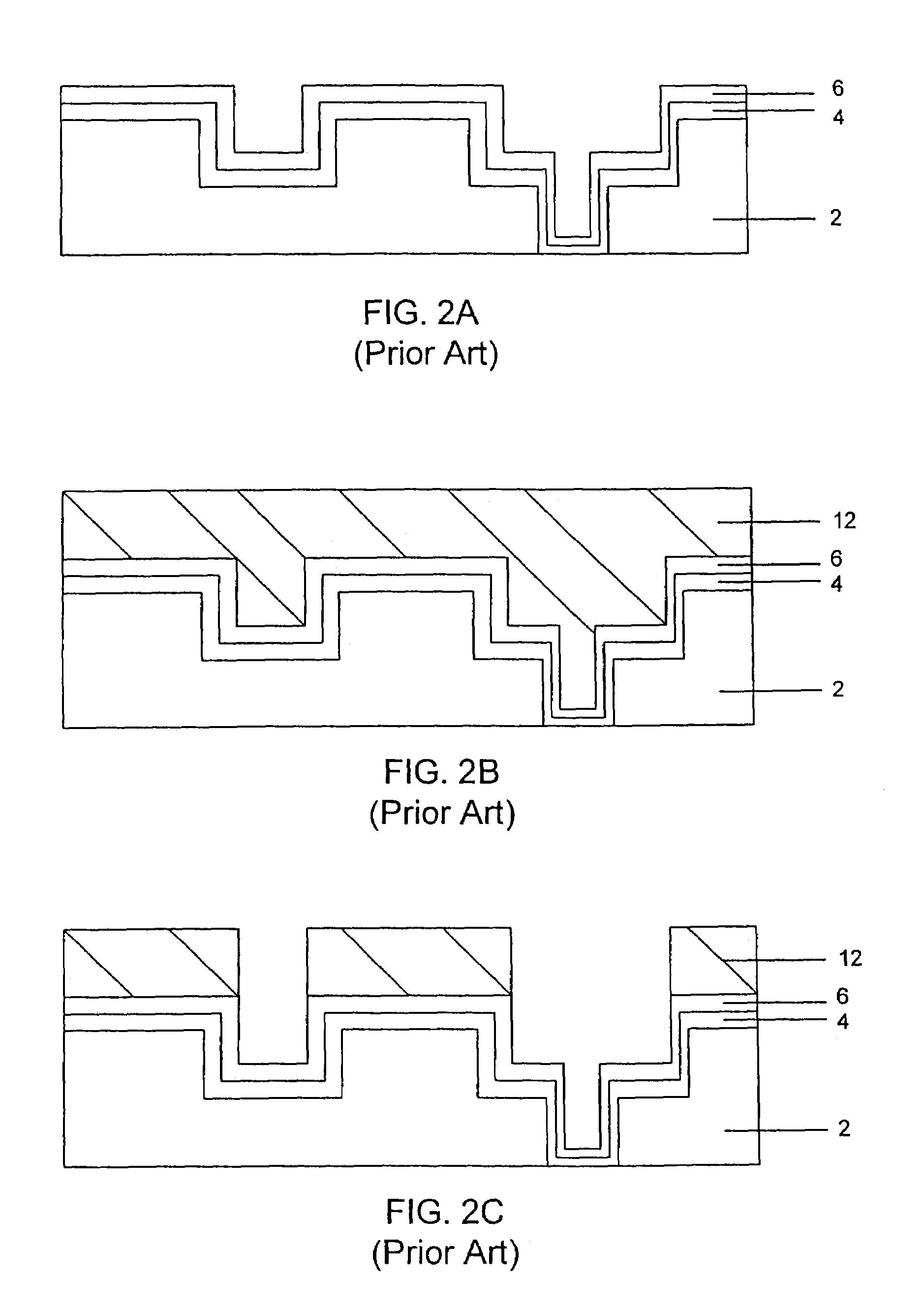Chip interconnect and packaging deposition methods and structures
a technology of interconnects and packaging, applied in the direction of superimposed coating process, liquid/solution decomposition chemical coating, coating, etc., can solve the problems of high cost of conventional cmp process, large number of defects on substrates, and long polishing time, so as to achieve efficient and time-saving manner
- Summary
- Abstract
- Description
- Claims
- Application Information
AI Technical Summary
Benefits of technology
Problems solved by technology
Method used
Image
Examples
Embodiment Construction
[0035]The preferred embodiments of the present invention will now be described with reference to FIGS. 3–8, wherein like structures and materials are designated by like reference numerals throughout the various figures. The inventors of the present invention disclose herein methods for depositing a conductive material, preferably copper, in cavities of a substrate. The present invention can be used with any substrate or workpiece such as a wafer, flat panel, magnetic film head, integrated circuit, device, chip, and packaging substrate including lead-tin solder alloys, or lead free solderable alloys. Further, specific processing parameters provided herein are intended to be explanatory rather than limiting.
[0036]FIGS. 3A–3D illustrate cross sectional views of methods for fabricating chip interconnects and packages in accordance with the present invention. In other words, FIGS. 3A–3D disclose methods for depositing a material, preferably a conductive material / solution such as copper, ...
PUM
| Property | Measurement | Unit |
|---|---|---|
| depth | aaaaa | aaaaa |
| width | aaaaa | aaaaa |
| width | aaaaa | aaaaa |
Abstract
Description
Claims
Application Information
 Login to View More
Login to View More - R&D
- Intellectual Property
- Life Sciences
- Materials
- Tech Scout
- Unparalleled Data Quality
- Higher Quality Content
- 60% Fewer Hallucinations
Browse by: Latest US Patents, China's latest patents, Technical Efficacy Thesaurus, Application Domain, Technology Topic, Popular Technical Reports.
© 2025 PatSnap. All rights reserved.Legal|Privacy policy|Modern Slavery Act Transparency Statement|Sitemap|About US| Contact US: help@patsnap.com



